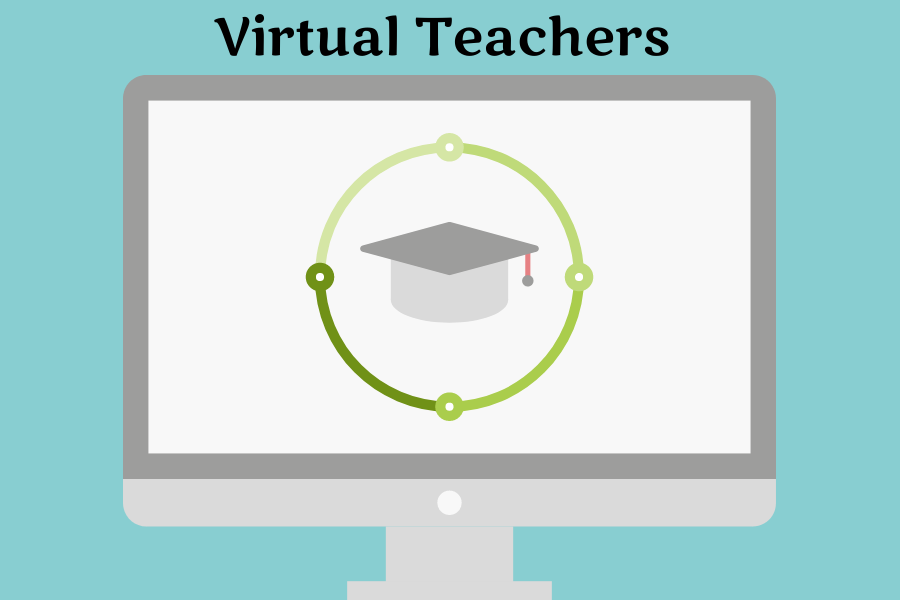Keep teachers in mind while school is online
As we partake in virtual learning, we must keep in mind that our teachers are working extremely hard.
January 5, 2021
Let’s face it: at one point or another this year, every Whitman student has been confused, worried, or even stressed out by virtual instruction. We’re all learning new content on a new platform while adapting to the new sets of obstacles it presents.
But we must keep in mind that this time is difficult for teachers as well. They, like us, must deal with challenges presented by Zoom, Synergy and MyMCPS. And yet, they are the reason that our education is still running smoothly.
There are a few steps that students should take to make virtual learning as seamless as possible for our teachers: we should leave our camera on, stay engaged both inside and outside of our Zoom classrooms and be patient.
Keep your cameras on
As we continue further into the school year, many students are turning their cameras off for class. In the same way that having a conversation in a breakout room is frustrating when classmates don’t turn their cameras on, teaching in a dark void demoralizes teachers.
“Not being able to feel like I have that connection with my students is really difficult,” said English teacher Danielle Fus. “When I can’t see their faces and I can’t see their expressions, it just feels like they’re so far away.”
Luckily, there’s a solution: just leave your camera on! In addition to making lessons more interactive for educators, when students show their faces, teachers can better understand when a lesson is working and when it’s dragging on.
“The more that students can put cameras on, the easier it is for me to see if people are still writing or if people look stressed out because they don’t get something,” said physics teacher Joan Cline.
Leaving cameras on not only humanizes virtual learning, but also allows teachers to adapt their lessons for future periods to ensure students engage with the material.
Participate in class
Participation doesn’t stop with merely having cameras on; students should actively join in classroom discussions. Even when we may not feel confident enough to unmute ourselves and speak up, the chat feature on Zoom presents a useful alternative for students to contribute to the discussion.
Both Fus and Cline believe that the Zoom chat is a useful option for students who might not feel comfortable verbally participating. Teachers can only realize what they need to improve if students stay engaged in class. If one student has a question about the material, it is likely that other students share those concerns.
“A lot of times students don’t think that other people have the same question,” Fus said. “But often, they do and it’s really good questions for clarity.”
This is where participation is key. In the classroom, teachers are able to receive constant feedback as to whether or not their lesson for that day is working. This is more difficult over Zoom, where reactions are more difficult to gauge. When we ask questions and stay engaged with the class, we not only learn better, but we also help teachers realize what they can improve on.
Stay engaged outside of class
Furthermore, we should engage with our teachers outside of the weekly two hours scheduled for each class. Virtual learning has already cut the time allotted for in-person instruction in half. For those with heavy course loads and far less teacher-led instruction, out-of-class participation is essential to our education now more than ever.
Students should let their teachers know which of their classroom methods work well, so they know what to repeat for future lessons. The difference between an excellent and mediocre lesson can be hard to tell online, so feedback from students via email or over Zoom can be helpful.
“Tell your teachers what’s going well,” Cline said. “We know what’s going well in the classroom because we can see it. We don’t know right now what’s working well for students and what’s making their lives easier.”
Walt Wisdom time, a designated period during which students can catch up with their teachers on Mondays and Wednesdays, also presents a perfect opportunity for students to work with teachers in a more personal setting. Whether it’s studying for a test or clarifying classwork, WWT can be extremely beneficial for students to get to know their teachers and perform better in class.
Be patient
Distance learning is hard for everyone, so patience is key. Every day, teachers encounter new challenges. By overflowing teachers’ inboxes with questions about grades or outstanding assignments, we can often exacerbate this problem. Though we shouldn’t feel afraid to email our teachers, we must strike a balance between engaging in the class and being outright annoying.
“Your teachers are human too,” Cline said. “They’re overwhelmed right now too. If we don’t reach out, it’s not because we don’t care, it’s because we are juggling too many things.”
Additionally, in order to avoid overflowing teachers’ inboxes, students should ensure that they contact teachers in the correct way. The easiest place to reach most teachers is their “mcpsmd.org” email found on the Whitman Staff Directory, Cline said.
When we do things to make our teachers’ lives easier, we also make our lives easier and our education better. Online learning isn’t ideal for anyone, but by helping teachers, we can make it the best it can be.








